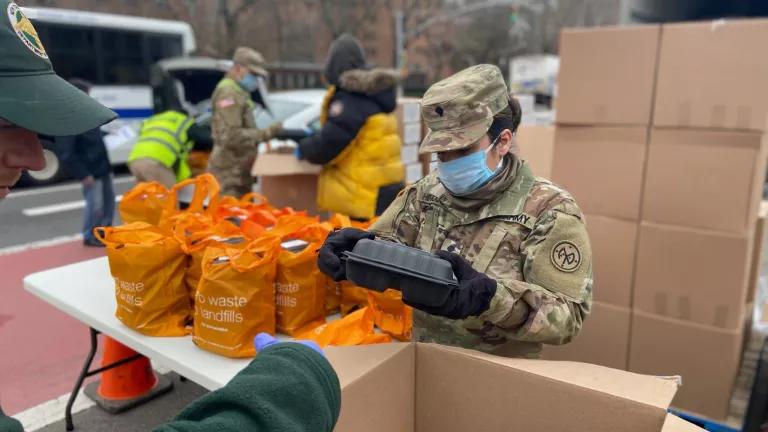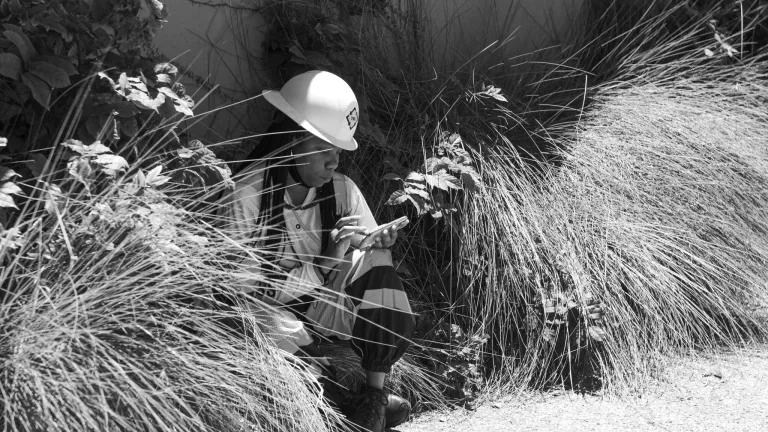Disasters Amidst COVID-19: The Year Ahead

The impact of COVID-19 cannot be understated as it changes the face of daily life across the world. And, unfortunately, questions like “what if another crisis strikes during this pandemic?” are no longer hypothetical as floods and tornados are already displacing people from their homes.
Local decision-makers in every region of the country are facing what seem like impossible choices: How do we keep people safe from extreme weather without exposing them to COVID-19 in community shelters? How do we prepare for and recover from disasters while maintaining physical distance? How can we safely evacuate if there’s a hurricane or wildfire while we’re trying to shelter in place? What if firefighters, construction workers, or search and rescue teams can’t access the protective equipment they need to respond to a disaster?
Planning and preparing for extreme weather is more important now than ever. In the short term, it’s crucial to establish how we’ll respond to disasters in the time of a major pandemic. Part of that must involve pre-disaster actions to proactively reduce risk: the more vulnerabilities we can address now, the less uncertainty we’ll face and the more resources we’ll have to deal with the unexpected. In the long term, we need to invest in forward-looking plans, policies, and programs to make sure we don’t end up in this situation again.
COVID-19 Highlights the Need for Hazard Mitigation
Hazard mitigation refers to action taken to reduce risk and decrease the impact of a future crisis. This is essential work, but it is underfunded and not well tracked at the state and federal levels, while local plans are often weak and poorly coordinated. FEMA has provided over $15 billion in hazard mitigation grants since the 1980s. However, that pales in comparison to the hundreds of billions of dollars spent on disaster response and recovery in the past decade alone.
The multiple catastrophic disasters of recent years and the predicted increases in disaster damages due to climate change—as well as the sudden rise of COVID-19 itself—highlight the shortcomings of our current approaches. Clearly, we could be planning and preparing better. But existing gaps in hazard mitigation will be further strained by COVID-19 (and vice versa, as responding to the health crisis necessarily diverts resources from other work).
Even absent a global health crisis, disasters exacerbate existing inequities in our society. Without urgent action, the dual threat of COVID-19 and climate-driven disasters will only further burden communities of color, low-income communities, and other marginalized and at-risk populations.
Disasters, many experts agree, are not “natural.” Instead, they represent the collision of a hazard like a storm or earthquake (or virus) with a vulnerable human population—and it’s our policies, biases, and decisions that determine who is vulnerable and create the disaster. That’s the bad news. The good news is that means we have the power to actively reduce those vulnerabilities.
We Need to Increase Investment and Support Local Decision-Makers
Additional stimulus bills provide an opportunity to increase investments in hazard mitigation and in infrastructure systems designed and built with future climate impacts in mind. Preventing damage, injuries, and illnesses associated with disasters will help decrease the burden on healthcare facilities, reduce COVID-19 exposure for disaster survivors and emergency responders, and avoid further disruption of essential services and programs.
Congress can fund a wide range of initiatives that will support short- and long-term resilience. First, it should increase funding for existing hazard mitigation and resilience planning, via programs such as:
- The Federal Emergency Management Agency (FEMA) Hazard Mitigation Assistance grants and the new Building Resilient Infrastructure and Communities program.
- The U.S. Department of Urban Development (HUD) Community Development Block Grant (CDBG) programs, as with the recent CDBG-Mitigation allocation.
- The U.S. Environmental Protection Agency (EPA) Drinking Water and Clean Water State Revolving Funds, which can be used for a range of activities supporting resilient water infrastructure.
This funding should explicitly prioritize planning, capacity building, and program/policy development—things like creating climate-smart building codes or holistic risk assessments. They should also require robust community/stakeholder engagement (using appropriate physical distancing as needed during the pandemic) and assessment of the equity implications of proposed actions.
Ultimately, though, Congress should provide funding like this in a more proactive way, since currently most hazard mitigation funding is only available after a disaster has already occurred. Congress should also fund related activities, such as:
- Increasing annual appropriations for the Hospital Preparedness Program, the only federal funding source for preparedness in regional health care systems.
- Fully funding the floodplain mapping that communities need to make smart land use and development decisions.
- Increasing funding for existing technical support programs for states and communities (e.g., DOE’s Building Technologies Office, which provides technical assistance to states in building code development).
- Ensuring that states adhere to FEMA guidance on incorporating future conditions into their State Hazard Mitigation Plans.
- Increasing headcount for FEMA deployable disaster workers and fund standardized, science-based training for responding to simultaneous disasters.
Hopefully, we won’t face a catastrophic hurricane, record-breaking floods on the Mississippi and Missouri Rivers, or massive California wildfires at the height of the COVID-19 pandemic. However, each of these events have happened in recent years, with frightening regularity. And while catastrophic disasters make national headlines, we also must remember that smaller-scale disasters are frequent occurrences and are already happening in the midst of COVID-19. The threat of simultaneous crises is already something communities are facing and it will not go away.




